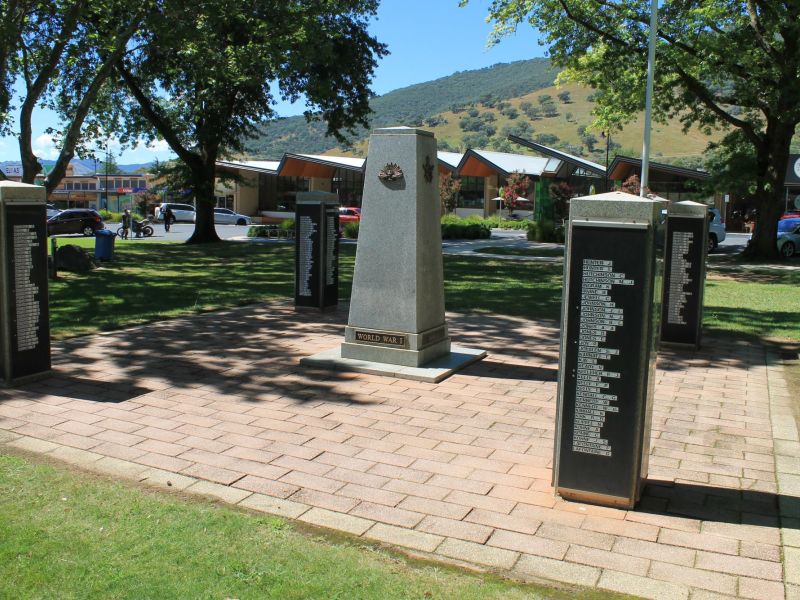Archibald McMeekin Paton
Archie was born in Tallangatta on the 28th of January 1917. He was the second of four sons to John Sydney and Catherine Winifred (née Gilchrist) of Tallangatta. Death would strike the Paton family a number of times in Archie’s early years. His mother, Catherine, would pass away when he was only 11 years old. Two of Archie’s brothers would die at an early age, the eldest, John at 22 in 1938 and David, the youngest, at 2 in 1922.
On the 12th of October 1936, Archie enlisted in the Militia Forces at Benalla. He joined the 8th Light Horse Regiment and was allotted the Army Number 470036. He had some previous military experience, having been in the Geelong College School Cadets in 1933. By 1940 he had attained the rank of Corporal. In October of that year he was discharged from the Militia Forces to allow him to enlist in the RAAF. This he did on the 13th of October at the No. 1 Recruiting Centre in Melbourne upon which he was posted to No. 2 Initial Training School at Bradfield Park, NSW.
His next posting was to No. 5 Elementary Flight Training at Narromine, NSW on December the 12th, 1940. It was at this posting that Archie was introduced to the basics of flying, gaining experience in the ubiquitous trainer the Tiger Moth. He was to remain here for about three months before moving onto No. 2 Embarkation Depot at Bradfield Park, Lindfield, NSW. The purpose of the embarkation depots were to provide accommodation for personnel awaiting embarkation and to make sure that they were medically and dentally fit.
On the 22nd of February 1941, Archie embarked on HMT Awatea bound for Canada where he would complete his flight training under the Empire Air Training Scheme. It would take over three weeks for Archie to arrive and disembark at Vancouver in Canada. He was then posted to the No. 1 Service Flying Training School at Camp Borden, Ontario. During his time here, Archie would spend the first eight weeks as part of an intermediate training squadron where he would focus on flying skills in the Harvard and Yale aircrafts. The following two weeks were spent at an advanced training squadron while the last two weeks were at a Bombing and Gunnery School. On the 6th of June 1941, Archie was awarded the Flying Badge and promoted to Flight Sergeant. His final posting in Canada was to No. 1 “Y” Depot in Halifax, Nova Scotia, where he waited to embark on a troop ship and travel to the United Kingdom.
Archie left Halifax on the 18th of June 1941 in convoy. Upon arriving at Iceland he disembarked and spent some time in the transit camp there. He finally embarked on the SS Volendam, arriving in Liverpool UK on the 16th of July. He was immediately posted to No. 60 OTU at RAF East Fortune at Berwick Scotland where he was part of a group of seven RAAF Officers and twelve RAAF sergeants being trained on single-engined Defiants. The Defiant was built as a “turret fighter” in that it had a gun turret at the back of the cockpit. After passing this course, he was posted to No. 151 Squadron RAF on October the 8th, 1941. In April of 1942 the squadron converted to Mosquitoes. The Mosquito was a twin engined, fast, sleek, wooden construction aircraft that was used in a multiple of roles. Records indicate that, up until November of 1942, Archie had had little contact with the enemy, never being fired at or firing his guns with the Defiants and only once being in action on Mosquitoes with which he had eighty night hours flying experience.
On the night of the 23rd of March 1943, Archie, now with the rank of Flying Officer, and his observer/navigator, Pilot Officer Thomas Hanson RAFVR, took off at 2107 hours in Mosquito DZ257. They were to undertake a Ranger operation over Holland, an operation where the crew flew over enemy held territory and were permitted to fire on “anything that moved”. This included aircraft, trains, barges, road vehicles, and troops. At 0025 hours ground crew noticed the return of DZ257. Archie informed the control tower that they needed priority in landing as the aircraft had little aileron control. He made one circuit without a landing approach, and on the second circuit went in from about 200 feet. The aircraft crashed and both Archie and Thomas were killed. From the remains of the aircraft, it seemed as though they had been through some flak.
Archie and Thomas were buried next to each other in the nearby Warwick Cemetery.
Archie is remembered on the Australian War Memorial Roll of Honour, the Geelong College Roll of Honour, the Yabba Road Cemetery, and the Tallangatta RSL War Memorial. For his service, he was awarded the 1939-1945 Star, the Air Crew Europe Star, the Defence Medal, the War Medal 1939-1945 and the Australian Service Medal 1939-1945
 Stephen Learmonth
Stephen Learmonth